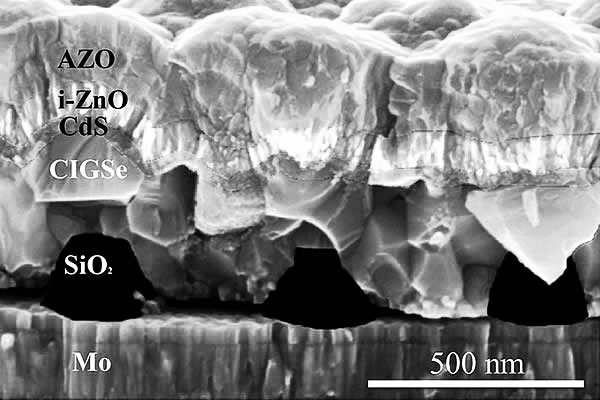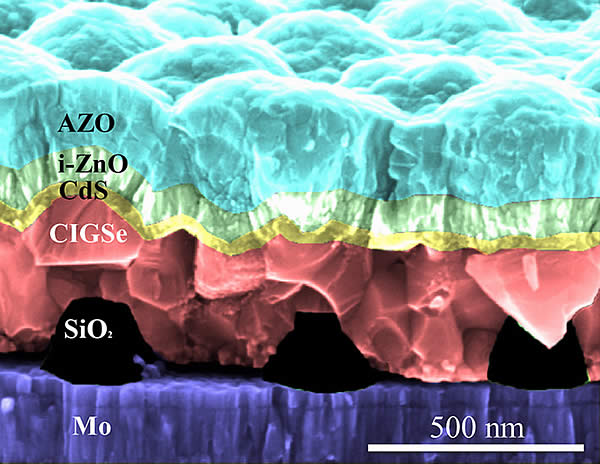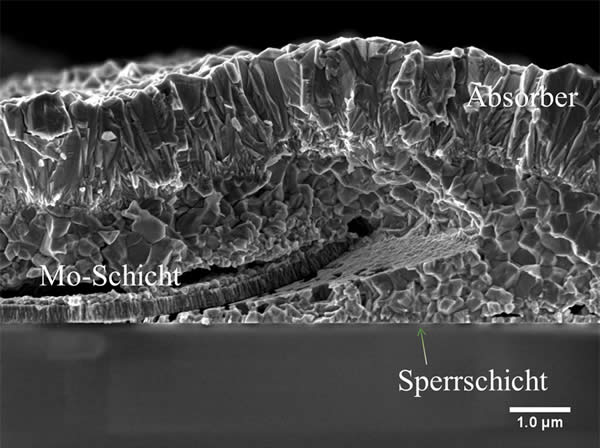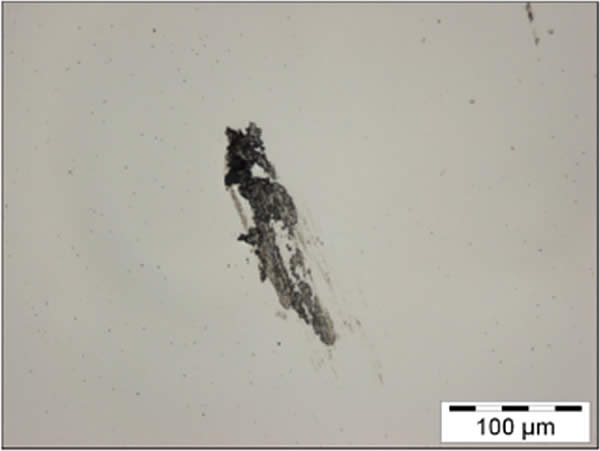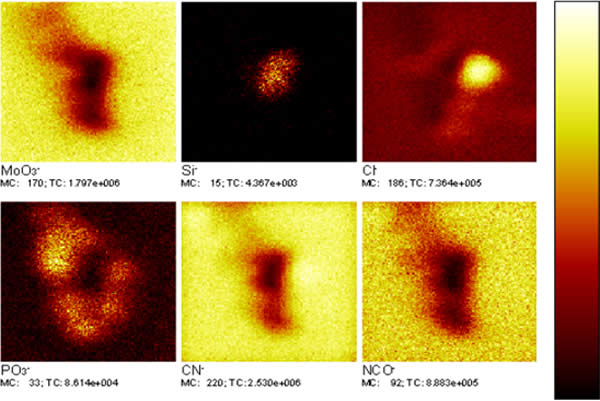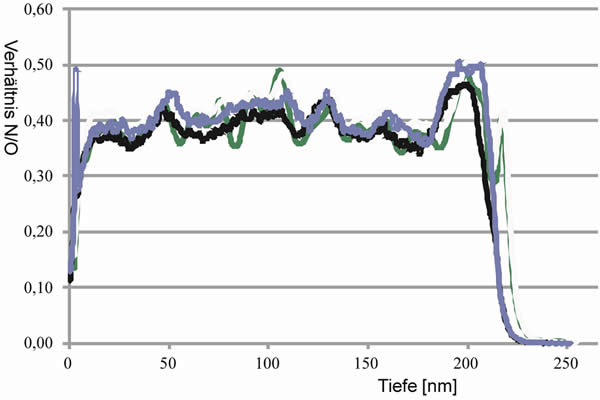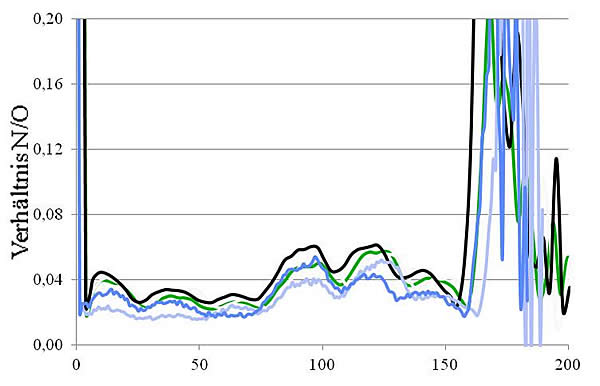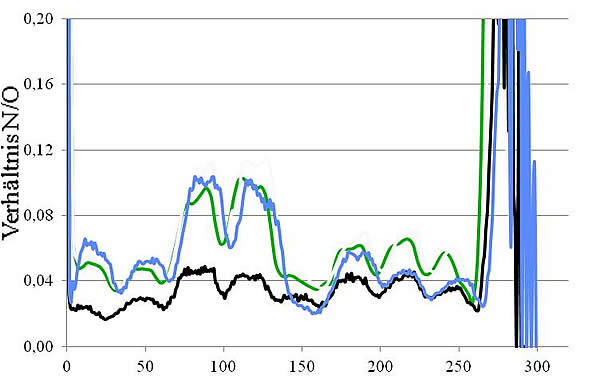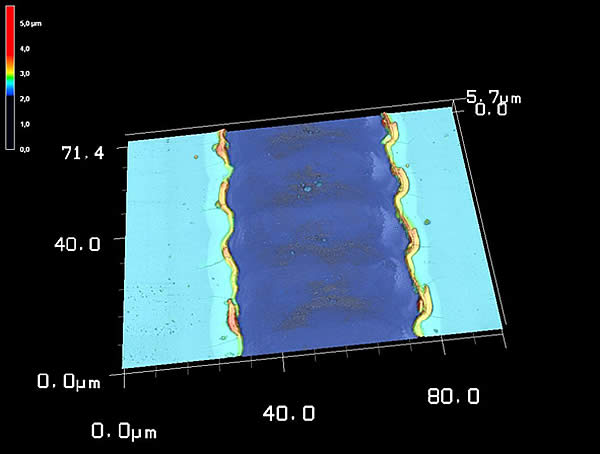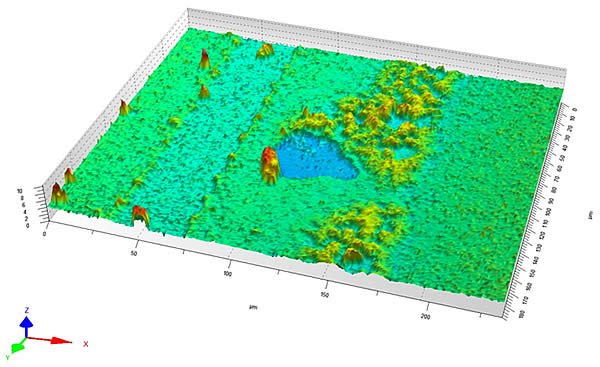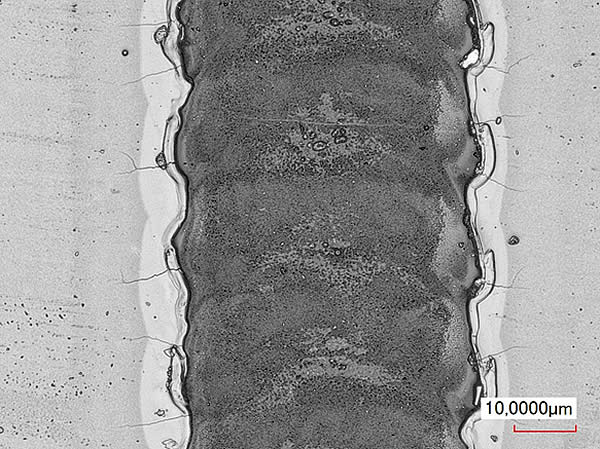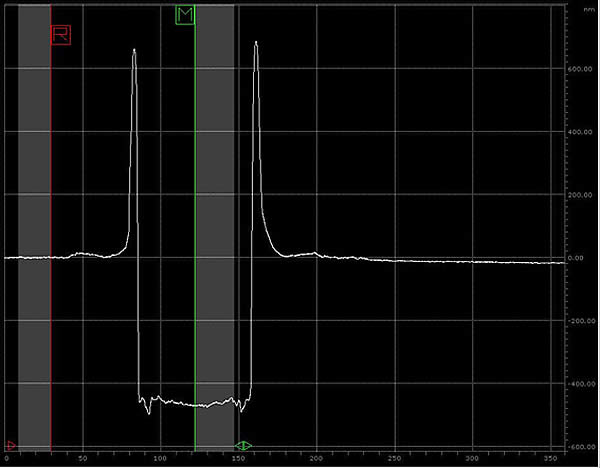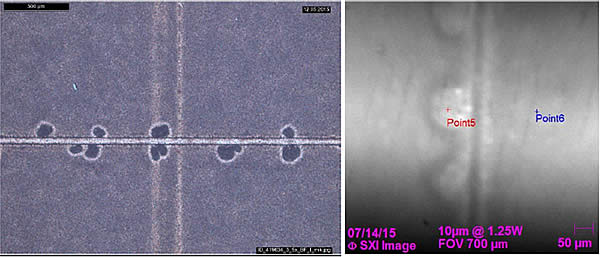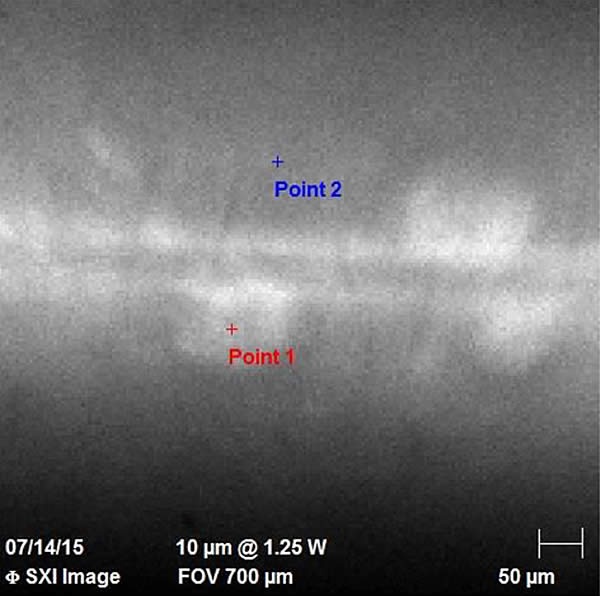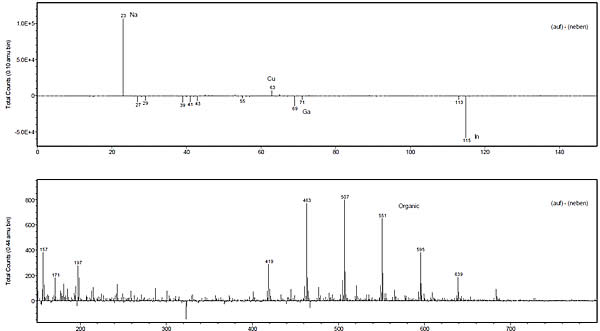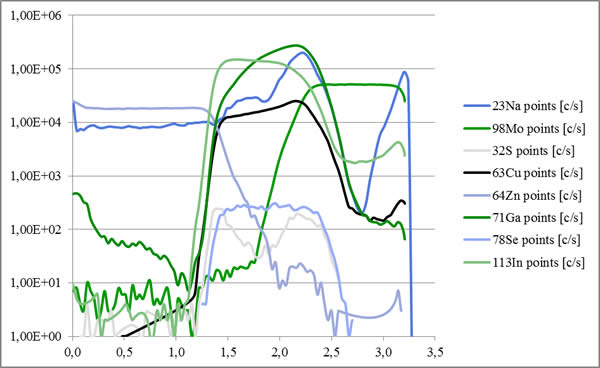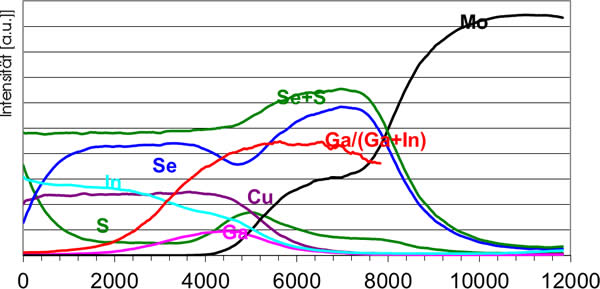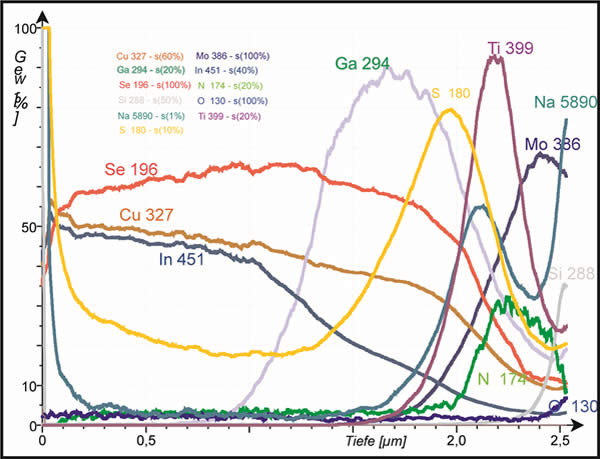1. Layer defect of solar cells: SEM
The layer structure of a CIGS solar cell must be shown as follows in order to achieve optimal efficiency. An incorrectly applied Mo layer can be recognized by high-resolution SEM images.
2. Assessment of delamination of the molybdenum layer on glass surfaces: TOF-SIMS
Task:
In order to prevent sodium diffusion from the glass into the molybdenum back contact, the glass is provided with an approx. 200 nm thick barrier layer. The barrier layer has an identical refractive index as the glass à differentiation by light-optical / microscopic methods is not possible. For this reason, defects are only detected after the Mo layer has been applied.
- Positive Sekundärionen-Signale
- Negative Sekundärionen-Signale
Defects: Increased intensities on Si+, Na+, Mg+, Ca+, Al+ and Fe+
OK range: increased Mo+, CxHy, C8H20N+ (quaternary ammonium compound)
Result:
- High Mo oxide signals are detected in the OK range. In addition to high CN signals, NCO signals can also be recognized.
- In the center of the defect only strongly reduced Mo signals are detectable (here probably from the defect edge). Otherwise there are no other defect-specific components.
- The Mo layer has detached in the area of the defect. In the center of the defect, increased Si and alkali signals (typical for glass) are detected together with traces of Al and Fe. No accumulation of organic compounds could be detected within the defect.
3. SiON in Junction Layers: SIMS
The barrier layers on the glass surfaces are applied by the supplier. Glasses with a length of 6 m are produced by a sputtering process with 8 cathodes. The barrier layers from different suppliers have different properties.
The effect of the barrier layer depends on the ratio of nitrogen / oxygen. The control is carried out by SIMS analysis.
- Der Vergleich des Verhältnisses von Stickstoff / Sauerstoff einer guten und einer schlechten Charge mittels SIMS ist eindeutig.
- Sperrschicht i. O.
- Sperrschicht n. i. O.
4. Short circuits (“hotspots”): profilometry
Laser scanning microscopy can be used to identify areas with short circuits, so-called “hotspots”.
5. Spots on solar cells: XPS and TOF-SIMS
Light microscopy reveals spots on solar cells. 2 areas of it (point 1 and point 2) are to be examined using XPS for their chemical bond structures.
More Na and Cu and less Ga and In are detected on the spot. In addition, an organic compound is detected on the stain, which indicates a long-chain alcohol by 44.03 amu. It could be a compound such as a vinyl alcohol or ethylene glycol.
6. Depth profile analysis of a solar cell using SIMS, SNMS and GDOES
- Tiefenprofilanalysen SIMS
- Tiefenprofilanalysen SNMS
- Tiefenprofilanalysen GDOES



